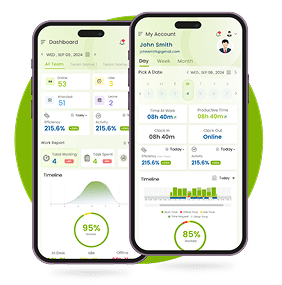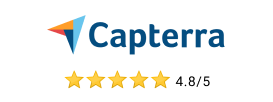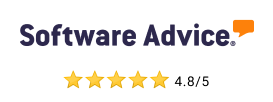A Performance Development Plan (PDP) is a tool for fostering growth and aligning individual employee development with organizational goals. Unlike traditional performance reviews that often focus on past performance, PDPs are designed to focus on future growth, providing employees with a clear roadmap for reaching their potential.
By setting clear goals, identifying skill gaps, and providing actionable steps, PDPs promote continuous learning and improvement. This blog will guide you through the core components of a PDP, its benefits for both employees and employers, and the tools and best practices to successfully implement a PDP that drives lasting results.
What is a Performance Development Plan (PDP)?
A Performance Development Plan (PDP) is an essential tool for fostering continuous improvement and growth within an organization. Unlike performance reviews, which often focus on past performance, the PDP is geared towards setting future goals and improving an employee’s potential.
It creates a personalized action plan that aligns individual development with the company’s objectives, ensuring both parties thrive. The plan includes clear steps, timelines, and benchmarks to track progress and address skill gaps, driving professional development in a structured manner.
Core Components of a PDP
Clear Objectives
-
Goals should be specific, measurable, and achievable within a set timeframe.
-
They should be aligned with both personal career aspirations and organizational priorities.
-
These objectives provide employees with a sense of purpose and direction, ensuring that their efforts are contributing to both their growth and the company’s success.
Skill/Knowledge Gaps
-
Identifying areas of development ensures that employees know exactly what they need to work on.
-
These gaps can be technical skills, industry knowledge, or soft skills such as leadership and communication.
-
Understanding where these gaps lie helps prioritize areas that are critical to the employee’s current role and future potential.
Actionable Steps
-
These are the specific actions that will be taken to develop the skills needed to close the identified gaps.
-
They may include taking courses, attending workshops, receiving mentorship, or participating in job rotations.
-
Actionable steps break down development into tangible tasks that are easy to track and execute.
Timelines
-
Timelines are crucial for ensuring that the development process remains on track and focused.
-
By setting realistic deadlines for achieving goals, employees can plan their actions and stay motivated.
-
Milestones along the way can provide checkpoints to measure progress and make adjustments as needed.
Success Metrics
-
Metrics are essential for evaluating whether the development plan has been successful.
-
These can include performance improvements, completion of development milestones, or even feedback from peers and managers.
-
Success metrics ensure accountability and provide a concrete measure of whether the desired outcomes have been achieved.
Feedback and Adjustments
-
Feedback is a continuous part of a PDP, helping employees understand how they’re progressing.
-
Regular reviews allow for adjustments in the plan based on changing priorities or challenges faced by the employee.
-
Constructive feedback fosters ongoing development and ensures that the PDP remains relevant and effective.
Support Resources
-
A PDP should outline the resources available to the employee, such as training programs, mentorship, or budget for external development.
-
Support from managers or team leaders is critical in keeping employees engaged and focused on their development journey.
Employee Involvement
-
Employees should actively participate in the creation of their PDP to ensure ownership and buy-in.
-
Their input in setting goals and identifying challenges makes the process more tailored and personalized.
-
When employees are involved in their development planning, they are more likely to take initiative and remain motivated.
Using a time-management matrix in a PDP helps employees prioritize tasks, ensuring efficient use of time to meet their development goals.
Why are PDPs Important?
Benefits for Employees
Career Growth

PDPs offer employees a clear path for upward mobility, outlining specific steps to reach their professional goals.

By focusing on skill-building and career development, employees feel more motivated to grow and excel in their roles.
Clarity in Expectations

By setting clear objectives, employees have a concrete understanding of what is expected of them and how they can meet those expectations.

Clear goals prevent misunderstandings and help employees feel more confident about their work.
Improved Job Satisfaction

Knowing that their employer supports their growth and provides development opportunities leads to higher levels of job & employee satisfaction.

PDPs can also lead to a better work-life balance, as they encourage employees to focus on specific career milestones without feeling overwhelmed.
Increased Motivation

The structured and measurable nature of a PDP gives employees a sense of accomplishment as they achieve set milestones.

The ability to track their development and see tangible progress enhances motivation and engagement.
Development of Leadership Skills

PDPs often push employees to take on leadership roles or new responsibilities, helping them grow into leadership positions.

Structured development can cultivate soft skills such as emotional intelligence, communication, and decision-making.
Benefits for Employers
Higher Retention

Employees who have opportunities for growth and development are less likely to leave, reducing the costs associated with recruitment and training.

Providing a clear path for advancement fosters loyalty and keeps employees engaged in their roles for longer.
Improved Productivity

PDPs ensure that employees are continuously upgrading their skills, leading to better performance and increased productivity.

As employees improve their skill sets, they can take on more complex tasks, contributing to organizational efficiency.
Stronger Team Alignment

PDPs ensure that individual employee goals align with organizational objectives, creating a more unified workforce.

When employees see how their growth contributes to company success, they are more motivated to work collaboratively.
Enhanced Employer Branding

Companies that invest in employee development through PDPs create a reputation as an employer of choice.

Strong development programs attract top talent, fostering a competitive advantage in the labor market.
Adaptation to Industry Changes

As industries evolve, so too must employee skills. PDPs help organizations stay competitive by ensuring that their workforce is prepared to tackle new challenges.

Employees who are continuously developed are more likely to adapt quickly to changes in the market or technology.
Increased Performance

According to a study by Bersin & Associates, companies with strong learning and development programs have 30-50% higher levels of employee performance than those without.

PDPs play a crucial role in driving performance by focusing on the continuous improvement of skills.
With the right PDP and time mapping you can bring wonders to your productive workplace.
How to Write a PDP: The 7-Step Guide
Creating a Performance Development Plan (PDP) is a structured process that guides both employees and managers in achieving long-term professional growth. Following a clear, actionable plan ensures that development goals are met and career progression is aligned with the needs of the organization. Here’s a 7-step guide to writing an effective PDP:

Set SMART Goals
-
Specific: Clearly define what needs achievement
-
Measurable: Establish quantifiable success metrics
-
Achievable: Ensure realistic goal-setting
-
Relevant: Align with organizational objectives
-
Time-bound: Set clear deadlines
Identify Development Needs
-
Self-assessments: Encourage employees to reflect on their strengths and areas for improvement.
-
Manager feedback: Obtain insights from managers to identify performance gaps or potential growth areas.
-
360-degree feedback: Collect feedback from colleagues, clients, or other stakeholders for a broader perspective.
-
Performance data: Review past performance reports or evaluations to highlight areas requiring improvement.
Create Actionable Strategies
-
Training programs: Identify courses, workshops, or seminars to enhance skills.
-
Mentorship: Pair the employee with a mentor to provide guidance and support.
-
Job shadowing: Allow the employee to observe others in similar or higher roles to gain experience.
-
Certifications: Recommend certifications or credentials that will increase the employee’s expertise and value in their field.
Assign Resources & Timelines
-
Allocate budgets: Ensure there are financial resources available for training, certifications, or other developmental tools.
-
Identify tools & technologies: Provide access to necessary tools, software, or learning platforms to facilitate development.
-
Set deadlines: Establish clear deadlines for each action step to ensure tasks are completed on time and progress is monitored regularly.
Define Success Metrics
-
KPIs (Key Performance Indicators): Use quantifiable metrics, such as sales targets or project completion rates, to measure success.
-
Skill assessments: Conduct periodic assessments to evaluate whether the employee has gained new competencies.
-
Feedback scores: Regularly collect feedback from managers or peers to evaluate improvements in specific areas like teamwork, communication, or leadership.
-
Achievement of goals: Measure success based on the completion of the SMART goals set at the beginning of the PDP.
Collaborate with Stakeholders
-
Employee involvement: Involve employees in the development of their PDP to ensure they are committed to the process and have ownership over their growth.
-
Manager guidance: Managers should align the employee’s goals with team and organizational needs while providing ongoing support.
-
HR collaboration: HR should ensure that the PDP aligns with the company’s broader objectives and help track progress across the organization.
-
Ongoing communication: Regularly communicate with all involved parties to ensure the plan remains relevant and achievable.
Schedule Regular Reviews
-
Monthly check-ins: Hold regular, informal meetings to discuss progress, provide feedback, and address any challenges.
-
Quarterly reviews: Conduct more formal reviews to evaluate overall progress, reassess goals, and adjust strategies if needed.
-
Adjustments: Be open to revising the plan as the employee progresses, if their goals or organizational needs change.
-
Continuous feedback: Ensure the employee receives ongoing feedback to stay motivated and on track towards their development goals.
By following these steps in a structured manner, a PDP becomes a powerful tool for both personal development and organizational success.
Free PDP Template
A Performance Development Plan template helps structure and organize the PDP process, making it easier for both managers and employees to follow. The template includes sections for:
-
Employee Information: Name, role, and department.
-
Development Goals: Space to outline SMART goals.
-
Actionable Strategies: Specific development activities, such as training or mentorship.
-
Resources & Timelines: A section to list tools, budgets, and deadlines.
-
Success Metrics: A space to define how progress will be measured.
-
Review & Feedback: A section for ongoing assessments and adjustments.
Performance Development Plan Template: PDF
A PDP template in an editable PDF format that ensures consistency while offering flexibility to customize goals, milestones, and timelines.
Download PDF TemplatePerformance Development Plan Template: Word
A flexible Word template that allows managers and employees to collaborate on setting goals and defining timelines for development.
Get Word TemplatePerformance Development Plan Template: Google Doc
A structured Google Doc template for tracking employee development and making data-driven performance adjustments.
Open Sheet TemplateBest Practices for Implementing a PDP
Implementing a Performance Development Plan (PDP) successfully requires attention to detail, effective communication, and the right tools to monitor progress. Following these best practices can ensure a simple and impactful process:
Use Visual Tools for Clarity

Create Clear Timelines: Use visual timelines to break down development activities into manageable steps and set clear deadlines, ensuring both parties are aligned on expectations.

Track Progress Effectively: Use visual project management tools like Gantt charts to monitor the ongoing progress of tasks and milestones, ensuring timely adjustments when necessary.
Foster Open Communication

Schedule Regular Check-ins: Hold regular one-on-one meetings to review the employee’s progress, address concerns, and make adjustments to the plan as needed.

Encourage Transparency: Create an environment where employees feel comfortable discussing their challenges, feedback, and suggestions, ensuring a collaborative and transparent approach to development.
Celebrate Milestones and Achievements

Acknowledge Successes: Recognize and celebrate milestones, no matter how small, to maintain enthusiasm and momentum.

Provide Tangible Rewards: Offer rewards such as certificates, gift cards, or public praise to further motivate employees and show that their growth is valued.
Set Clear and Achievable Goals

Break Goals into Smaller Steps: Set both short-term and long-term goals. Breaking larger goals into smaller, achievable steps makes progress feel more manageable and prevents overwhelm.

Ensure Alignment with Organizational Objectives: Make sure the employee’s development goals align with broader organizational priorities, ensuring mutual benefit.
Provide Continuous Learning Opportunities

Offer Ongoing Development Programs: Provide employees with access to relevant training, certifications, and mentorship opportunities that directly support their development goals.

Promote Self-directed Learning: Encourage employees to take charge of their own development by providing resources like books, online courses, or webinars that align with their goals.
Monitor and Adjust the Plan Regularly

Track Progress and Metrics: Regularly assess the employee’s performance against the agreed-upon KPIs to ensure that they are on track and meeting their goals.

Adapt the Plan as Needed: Be flexible and ready to revise the PDP based on new challenges or opportunities that arise, ensuring that it remains relevant to both the employee’s needs and the company’s goals.
Ensure Accountability

Define Responsibilities: Clearly establish roles and expectations for both the employee and manager, ensuring both parties are accountable for their parts in the development process.

Set Up Regular Accountability Checks: Use scheduled reviews and feedback loops to hold both parties accountable for making progress on the PDP.
Provide Support and Resources

Offer Mentorship and Coaching: Pair employees with mentors or coaches who can provide additional guidance and advice throughout the development journey.

Provide Necessary Tools: Ensure employees have access to the tools, technologies, or any other resources they need to succeed in achieving their goals.
By incorporating best practices for implementing a PDP, organizations can optimize workload distribution, ensuring that each team member is empowered to thrive while achieving both personal and company goals.
Common Mistakes to Avoid
While a PDP can be a powerful tool for growth, certain mistakes can undermine its effectiveness. Avoid the following pitfalls to ensure the success of your PDPs:
Vague Goals

Setting vague goals, such as “improve communication skills,” is unproductive. Instead, specify the actions and measurable outcomes required to achieve the goal.

For example, a better goal might be, “Complete a public speaking workshop and lead two team meetings to practice communication skills.”

Clear, actionable goals are essential for progress and allow for easy measurement of success.
Ignoring Employee Input

Employee input is crucial in developing a meaningful and personalized PDP. Employees should be actively involved in the process, setting their own goals and suggesting actions that align with their career ambitions.

Failing to include the employee’s perspective may lead to disengagement, as the plan will not be tailored to their unique strengths, needs, and aspirations.
Failing to Update the Plan as Priorities Shift

The business environment and organizational needs can change, and so should the PDP. Failing to adjust the plan when new challenges arise or priorities shift can render the plan irrelevant or outdated.

Regular reviews and adjustments are essential to ensure that the PDP remains aligned with evolving goals and business priorities. Keeping the plan flexible allows for continuous alignment with both personal and organizational objectives.
There are numerous workplace distractions that kill employee productivity, and a PDP alone may not be enough to increase performance.
Tools to Simplify PDP Creation
Creating a Performance Development Plan (PDP) can be simplified with the right tools. These tools help visualize goals, track progress, manage learning, and facilitate communication, making the process more efficient and ensuring alignment between managers and employees. Here are some top tools to simplify PDP creation and management.
Learning Platforms

Coursera, LinkedIn Learning, and Udemy: These platforms offer a wide variety of online courses that employees can take at their own pace. Whether it’s technical skills, leadership training, or soft skills development, these platforms provide structured learning paths that align with an employee’s career development goals.

Infinite LMS: Infinite LMS is an advanced Learning Management System that allows organizations to manage their employees’ learning and development efficiently. It enables the assignment and tracking of various training activities, making it easier for managers to oversee employee progress and ensure the learning is in line with company goals.
Project Management Tools

Asana, Trello, Monday.com: These project management tools help ensure that tasks and goals set in the Personal Development Plan (PDP) are being completed on time. Employees and managers can create tasks, assign deadlines, and track progress in real time.

Desklog: Desklog is a time-tracking software that helps employees track the time spent on various PDP-related activities. It provides valuable insights into productivity and helps optimize resource allocation, ensuring efficient use of time during the development process.
Collaboration Tools

Slack, Microsoft Teams: Communication is a key aspect of any effective PDP, and these tools help maintain continuous dialogue between employees and managers. They allow for quick messaging, file sharing, and real-time feedback, ensuring alignment on progress, challenges, and necessary changes.
Performance and Feedback Tools

15Five, Lattice: These tools help companies track employee performance and gather regular feedback. They play a vital role in the PDP by allowing for ongoing performance evaluations, goal-setting, and feedback collection, ensuring employees stay on track with their development plans.
Together, these tools create a complete ecosystem that supports an employee’s growth by providing structure, accountability, communication, and feedback, ultimately helping both employees and organizations achieve their development goals more effectively.
Conclusion
In conclusion, Performance Development Plans (PDPs) are essential for aligning individual goals with organizational objectives. By setting clear goals, addressing development needs, and providing support, PDPs enable employees to reach their full potential and contribute to business success.
To optimize your PDP, use visual tools, maintain open communication, and celebrate milestones. Avoid pitfalls like vague goals and lack of employee input. Download the customizable PDP template to begin creating effective, measurable development plans that benefit both employees and the organization.















